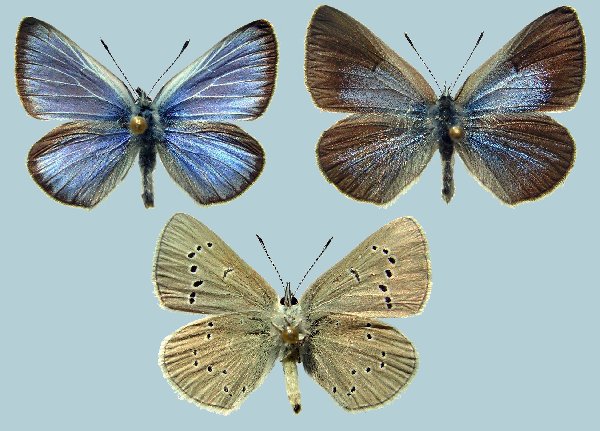Glaucopsyche lygdamus oro

Photo Life History: Glaucopsyche lygdamus oro
Habitat: Mountain Canyons; Pinyon Juniper; Mountain Hilltops; Mountain Hillsides
Host Plants: Hedysarum boreale; Lupinus argenteus; Lupinus sericeus; Astragalus spp.
Suitable Lab Host Plants:
How to Find Female Butterflies: Females can be found flying near larval host plant.
How to Care for Live Female Butterflies: Click here.
Methods of Female Oviposition: Twin Cup Method.
How to Find Eggs: Look on Flower Stems; Look on Flower Buds.
How to Hatch Eggs: Separate eggs individually.
How to Find Caterpillars in the Field: Look for Ants Tending Caterpillars. Tending ants can be very conspicuous as you search for larvae. Larvae can be abundant and easy to find in situations where the adults fly well especially around mountain hilltops in association with Lupinus argenteus and Lupinus sericeus. (See this video to learn more about ants tending silvery blue caterpillars on Lupinus sericeus.)
Caterpillar setups: Open terrariums; Twin Cup Method.--Because cannibalism is a concern with this and other lycaenid larvae, it is best to separate them out either in a open terrarium setup, or using the twin cup method. It is more work; but, you gain more control by separating out larvae into small twin cups as shown on this photo.
Larva to Pupa: Larva Changes Color.
How to Find Pupae in the Field:
Number of Broods per Year: 1
Overwintering Stage: Pupa.
Overwintering Strategies: Your Own Backyard; Refrigerator
Post-Hibernation Strategies: Post-diapause pupae be exposed to long-day photoperiod , increased temperature, and high humidity.
Avoiding Diapause Techniques: None known.
Disease Prevention: Change out host plant and remove frass every two to three days in a twin cup setup; every 5 days in an open terrarium setup.
Emergence: Emergence Container
Field Notes:

